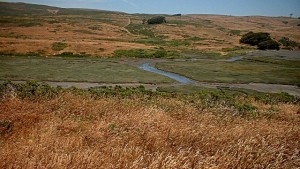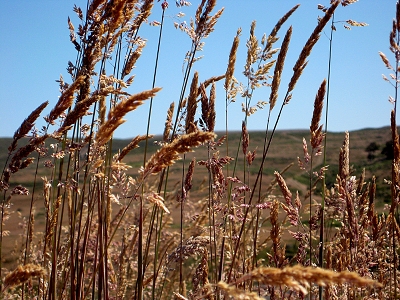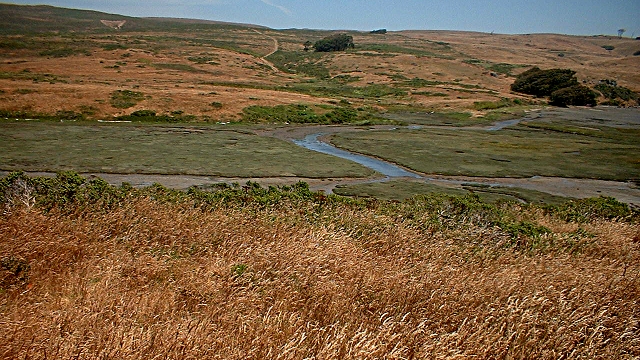
California’s grasslands are some of the most heavily invaded habitats in the state. As the climate changes—temperatures increase and water becomes scarcer—the conditions will favor exotic grasses, which will become even more prevalent. These are the conclusions drawn by Brody Sandel, a post-doc at Aarhus University in Denmark, and Emily Dangremond, a grad student at UC Berkeley, in their recent paper, "Climate change and the invasion of California by grasses" in Global Change Biology. They studied the traits of native and exotic grasses. Many of the characteristics that make an exotic grass successful in a new habitat (tall stature, big leaves, big seeds) will also be beneficial traits in the world to come.
Full disclosure here: Brody, Emily and I were all grad students together in the same lab at UC Berkeley. So when Emily told me she had a new paper, I was curious to see what it was all about. It turns out their study is really cool. It looks at the interaction of two major world-changers: invasive species and climate change. Their paper talks about exotic species—species that are not native to a particular habitat but are not necessarily detrimental, and noxious weeds—species that are somehow disruptive, because they outcompete native species or alter the habitat. Noxious weeds are what we would also call invasive plants.
Brody and Emily’s study draws on existing datasets on current plant distribution across the state, plant traits, and current and future climate. They mapped the distribution of all the different species in California grasslands, using data from the Jepson Manual (the bible of California plant life), and a few other sources, to fill out an 800-cell grid of the state. They looked at the traits of the species—including how tall the plants are, whether they are annual or perennial, how much of their leaf mass comes from nitrogen, and the size of their seeds—and examined how the traits relate to the climate where the plants live today. Especially important was the proportion of exotic species in each of the grid cells. Then they turned up the temperature. They predicted the proportion of exotic species in each grid under climate change scenarios: higher average temperatures and less available water.
They found that as the temperature increases and water availability decreases, the proportion of exotic species increases. And, the proportion of noxious weeds increases. Higher temperatures favor traits that tend to be possessed by exotic species, such as tall plants with big leaves and annual lifestyles. These are the same traits that made the plants successful invaders in the first place. For example, a tall plant extends above a short plant, stealing its light. But burly exotic plants like Holcus lanatus outcompete native species for light. And generally, plants with big seeds grow to be hearty seedlings, which are better competitors than scrappy little seedlings grown from modest sized seeds. This study predicts that noxious weeds will become even more prevalent, because they have traits that will serve them well under the conditions of climate change. The changing climate acts as a filter, straining out the native species.

Years ago, I asked a grad student friend why she studied grasslands. I just couldn’t understand the appeal of a field of grass—it seemed boring. My friend Tasha explained that she just loved the way grasses look when they blow in the wind. A few weeks later, I went with her to her field site near Point Reyes, and I immediately understood the aesthetic appeal of grasslands. If you’re picturing a green manicured lawn with short little blades of grass, toss that idea right now. Instead, think of taller grasses, shin height or higher, in all shades of green, brown, gold and even purple. Think of the colors shifting as the wind blows. It is really a beautiful sight. California’s grasslands are expected to expand as the climate changes. But the inhabitants of these grasslands won’t be the grasses that were there 100 or 200 years ago. Instead, there will be a bunch of weeds blowing in the wind.
